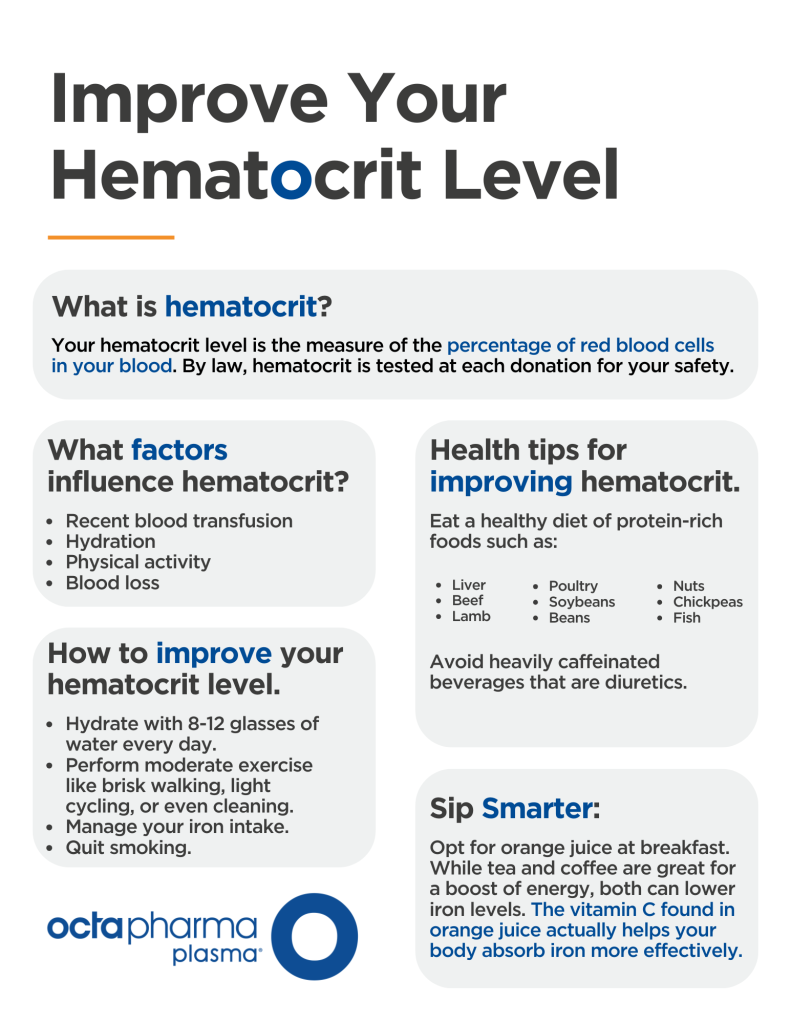If you’re considering donating plasma, you may have heard about hematocrit—but what exactly is it? Your hematocrit level measures the percentage of red blood cells in your blood, which is essential for carrying oxygen throughout your body. For your safety, hematocrit is tested at each plasma donation to ensure you’re eligible to donate.

Factors That Influence Hematocrit
Several factors can impact your hematocrit levels, including:
- – Recent blood transfusions
- – Hydration levels
- – Physical activity
- – Blood loss
How to Improve Your Hematocrit Levels
Maintaining a healthy hematocrit level is important, especially if you plan to donate plasma. Here are some simple ways to help improve your levels:
- – Stay hydrated by drinking 8-12 glasses of water per day.
- – Engage in moderate exercise like brisk walking or light cycling.
- – Monitor your iron intake to ensure your body is producing enough red blood cells.
- – Avoid smoking, as it can negatively impact circulation and overall blood health.
Diet Tips for Improving Hematocrit
Eating iron-rich and protein-packed foods can help support healthy hematocrit levels. Try incorporating:
- – Meats: Liver, beef, lamb, poultry
- – Plant-based sources: Soybeans, beans, nuts, chickpeas
- – Seafood: Fish
It’s also best to limit heavily caffeinated beverages, as they can act as diuretics and may reduce iron absorption.
Health Tip: Make the Most of Your Iron Intake
For better iron absorption, swap your morning coffee or tea for a glass of orange juice. While caffeine can lower iron levels, vitamin C from citrus fruits helps your body absorb iron more efficiently.
By following these plasma donation tips, you can help maintain a healthy hematocrit level and continue making a difference through plasma donation!



